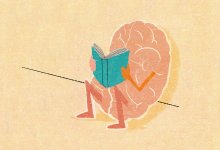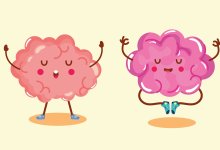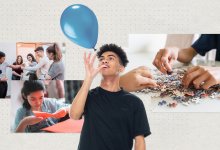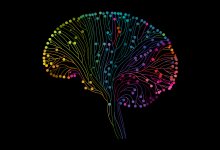From: Link to the article
7 Retrieval Activities That Help Learning Stick
These low-pressure, brain-based learning strategies help students retrieve what they know, building confidence and motivation.
After years in both the classroom and leadership roles, I’ve watched a familiar pattern unfold: We plan with intention and teach with care, and still, students forget. The problem isn’t motivation—it’s memory. And that’s where the science of learning offers us a lifeline. Strategies like retrieval practice are essential tools for turning short-term learning into lasting understanding. Teachers know that learning isn’t just about exposure; it’s about what sticks. But the real question for busy educators is this: How do we harness these powerful tools without adding more to our already-full plates?
How Learning Happens
The four essential cognitive processes support lasting learning:
- Attention. What we focus on and notice.
- Encoding. How we process and make sense of it.
- Storage. How we keep that information in our brains.
- Retrieval. How we access and use stored information when we need it.
Of these, retrieval plays the most critical role in long-term retention. Bringing information back to mind plays the most critical role in long-term retention. When students engage in active recall, they strengthen neural pathways, making knowledge more durable, flexible, and accessible.
This is where the paradox of forgetting comes in. Forgetting isn’t a flaw; it protects our brains from overload. The forgetting curve shows that we lose more than half of new learning within an hour and nearly two-thirds within 24 hours, unless we interrupt that decline through deliberate retrieval.
Each act of retrieval, whether a moment, a day, a week, or a month later, strengthens memory. When we connect new learning to stories, visuals, movement, or prior knowledge, students require fewer repetitions to retain it. By embedding retrieval tools into daily routines, we don’t just review, we make learning stick.
Retrieval Strategies That Work
When retrieval is embedded in low-pressure activities like quick writes, brain dumps, or partner discussions, it reinforces learning without stress. Here are seven practical ways to embed retrieval into your daily routine—no tests required.
1. Brain dump (also called show what you know, data dump, or free recall). After 10–20 minutes of instruction, pause and have students write everything they remember from memory.
Why it works: Free recall strengthens memory by boosting retention, improving knowledge organization, using inferential reasoning, and supporting student confidence, more effectively than rereading or reviewing notes.
2. Read, pause, retrieve. Read a short text aloud. Pause. Have students turn the page upside down and write down as much as they can remember. To deepen their thinking, have students compare, add details, clarify gaps, or respond to a prompt such as, “How does today’s lesson connect to previous ones?”
Why it works: Immediate retrieval after reading improves comprehension, reinforces encoding, and helps students monitor their understanding in real time.
3. No-quiz quick writes. Set a timer and have students “stop and jot” in response to a prompt or personal connection. These low-stakes writes foster relevance and creativity while tracking progress through word count or proficiency goals. Collect them in a portfolio after each unit to measure growth over time.
For example, assign a 15-minute quick write with vocabulary or sentence starters. Offer choice prompts for relevance and creativity. Then, cocreate a summary on the board (write and discuss), using colors to slow down and support comprehension. Students copy it, then flip their paper to recall the modeled writing.
Why it works: Writing from memory strengthens retrieval pathways; spaces and interleaves learning; deepens personal connection; and supports metacognitive reflection.
4. Mini-quizzes for connection and reflection. You don’t need to grade low-stakes quizzes for them to work. Use them to boost memory and strengthen connections. Post or pass out five quick questions—true/false, matching, images, or open-ended. Students can discuss, pair, share, self-check, or reflect silently.
You can space out learning by asking how the content connects to past lessons, or interleave topics by asking what’s similar to or different from other subjects.
Tip: Design mini-quizzes for quick comprehension checks. These quizzes can be collected for feedback, swapped for peer review, or self-graded. Many students report that mini-quizzes are the most helpful part of the routine. By the end of the year, students can create their own quizzes!
Why it works: Retrieval improves retention, lowers anxiety, and builds deeper understanding.
5. Stoplight reading: Interleave and retrieve. Have students engage with a text using the stoplight system for highlighting:
- Red = Don’t understand
- Yellow = Can figure out based on context
- Green = Know well
Then, use one of the retrieval methods above to recall the content of the reading.
Why it works: The stoplight method visually helps students assess their understanding, while retrieval promotes active recall. Combined with interleaving, it strengthens connections between ideas and enhances long-term retention.
6. Breathe, retrieve, reflect. Normalize forgetting with metacognitive check-ins. The teacher announces a word or concept, and students hold up the number based on how well they retrieved it:
- 1 = “Nailed it.”
- 2 = “I’ve got it.”
- 3 = “I forgot.”
Encourage students to partner up, share their level, and retrieve together.
Tip: Post the forgetting rubric 1–3 across the board from right to left like a “metacognitive rainbow,” aligned with the lesson objective or “can do” statement. Students can physically move along the spectrum based on their ability to retrieve the information to show their level of understanding. Then, have students pair up to discuss their placement, sharing what they remember or forgot to fill in gaps, and strengthen recall together.
Why it works: Pausing, retrieving, collaborating, and reflecting normalize forgetting, deepen understanding, foster collaboration, and boost confidence.
7. Embed retrieval into your routines. Start class by asking students what they learned yesterday, or pause mid-lesson or at the end to ask what they remember from the last unit or how today’s content connects to previous learning. Use strategies like these:
- Turn and talk
- Stop and jot
- Post-it Notes or graffiti walls
- Blast-from-the-past questions
- Drawing or writing two takeaways
- Passing your paper
Tip: Create a weekly “do now” paper with mini-quizzes, free recall, a write-and-discuss section, and a Friday reflection section. This routine integrates retrieval practice into the daily rhythm without extra planning.
Students submit the paper at the end of the week. While often ungraded, these provide quick feedback, and the reflections can be used to guide the following week’s planning.
Why it works: This approach integrates retrieval practice into the routine, providing low-pressure, engaging opportunities like moving along a spectrum, gallery walks, matching drawings, or verbal recall. Through embedding these moments, retrieval becomes an effortless part of learning, strengthening knowledge and enhancing student-teacher rapport.
To help students truly learn, we don’t need to teach more; we need to pause, retrieve, reflect, and connect. By giving students frequent, low-stakes opportunities to forget and remember, we’re not just preparing them for a test, we’re equipping them to build lasting knowledge, confidence, and independence. When we normalize forgetting as part of the process and embed retrieval into daily routines, we help students push past the not-quite-there-yet and move confidently toward mastery and success.















